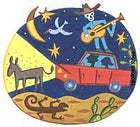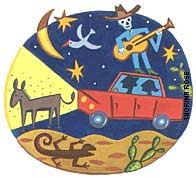Mexico 200 is winding, narrow, and elevated way above the surrounding landscape, with no discernible shoulder. There’s more livestock on it than on any other major artery in Mexico, so expect delays. Our observed roadkill list included three horses, five cows, two burros, four armadillos, and countless crabs, squirrels, and dogs. Most of the tiny towns along the coast will be marked with road signs, and you’ll always be turning to the west, usually on an unpaved track. When in doubt, stay on the most traveled road and stop frequently to ask directions. As long as you’re headed for the playa, you should be OK. Don’t drive at night unless it’s absolutely unavoidable.

Rent a car in Puerto Vallarta or Acapulco, where all the big agencies are represented. A Volkswagen bug will cost approximately $180 per week, assuming you return it to the office where you rented it. Otherwise expect a hefty drop-off fee of at least $200. Booking a car from the United States means a better rate in some parts of Mexico, but not here. Prices were better when we checked directly in-country.
Be sure your tank is full, especially on the long stretch between Puerto Vallarta and Barra de Navidad. And expect to get a flat or two, so if you’re renting a car, confirm there’s a working jack and spare before you hit the road. Even small villages have a tire repair shop, or vulcanizadora, but life sure is a lot easier with a can of puncture sealer.
Don’t always believe the left-turn signal you get from trucks you want to pass. Sometimes it means, “It’s OK to pass,” and sometimes it means, “I’m turning left.” But there are plenty of times when it simply means, “Signal? What signal?”


